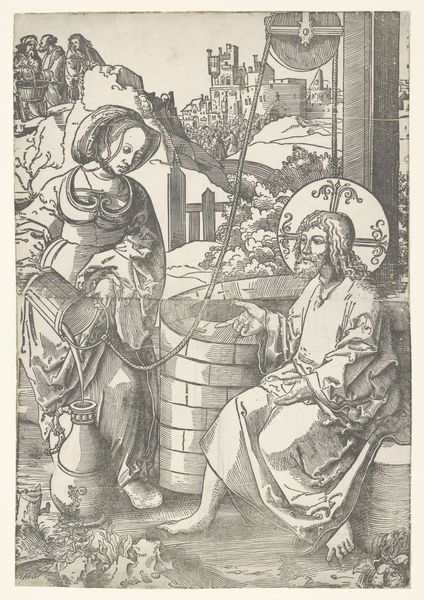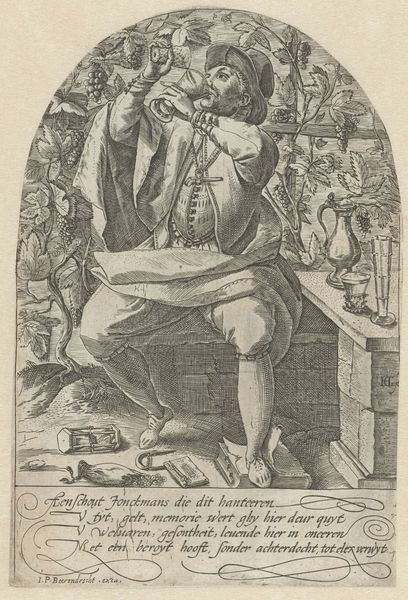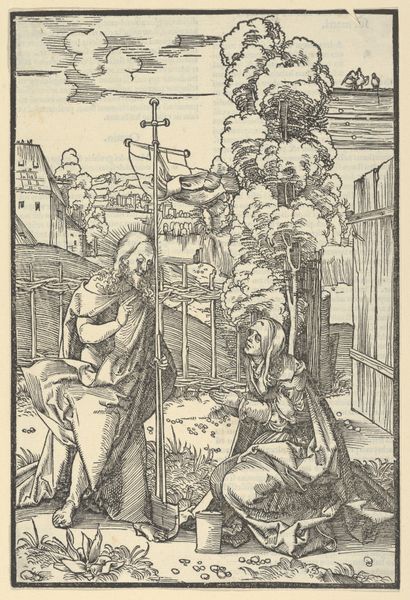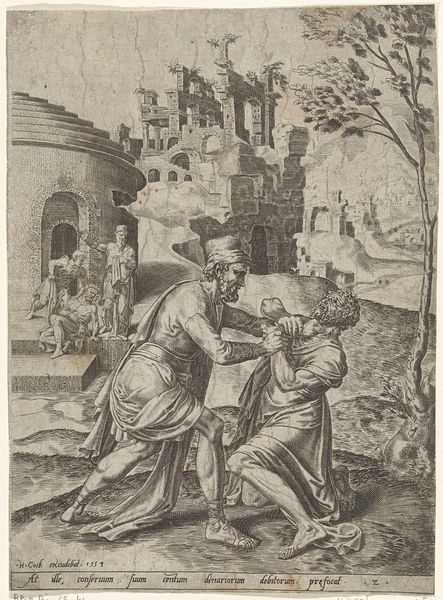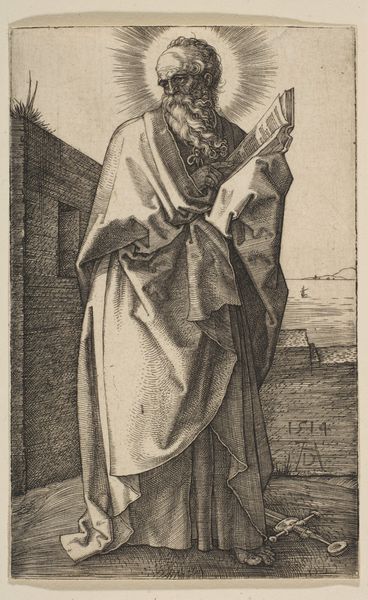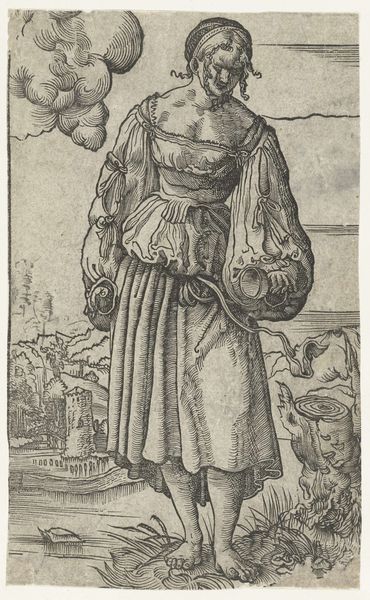
Dimensions: height 126 mm, width 83 mm
Copyright: Rijks Museum: Open Domain
Editor: Here we have "Oude vrouw nadert haar graf," or "Old Woman Approaching her Grave," an engraving by Marcantonio Raimondi, dating from sometime between 1510 and 1527. The allegorical nature of the artwork is somber, isn’t it? What do you see as particularly significant about the composition and themes present in this work, especially within its historical context? Curator: What immediately strikes me is how this print reflects the growing humanist interest in mortality during the Renaissance, which profoundly influenced the visual arts. We see this preoccupation expressed as a morality play—consider the artist's emphasis on the public awareness of death through *momento mori* imagery. The skeletal figure of death alongside symbols like the skull and hourglass served as public reminders of life’s fleeting nature. Do you think the setting of a common landscape serves to enhance its moral teaching? Editor: Absolutely. It personalizes death and the journey, like something relatable instead of divine punishment or anything mythic. What is striking, also, is that although the themes in this engraving speak to human universalities and could almost be seen as "realistic," its style is tagged "Mannerism". What historical or cultural aspects do you think might account for the contrast between the subject matter and stylistic tags of this piece? Curator: This contrast embodies the complex socio-political tapestry of the early 16th century. The "Mannerism" label speaks to an evolving artistic style, and represents a time where individual expression became the norm, which suggests how social ideals surrounding the role of art are shifting to being viewed as products of the creator rather than societal norms. It signifies an intellectual independence to the creator who can now take on their role as interpreters rather than transcribers. Editor: Fascinating, I had never considered that angle. I will definitely remember that. Curator: And I find I will reflect more on the artist’s awareness of the didactic power of art and its role within the public sphere. Thank you for pointing out that particular stylistic paradox, and enriching this analysis.
Comments
No comments
Be the first to comment and join the conversation on the ultimate creative platform.



